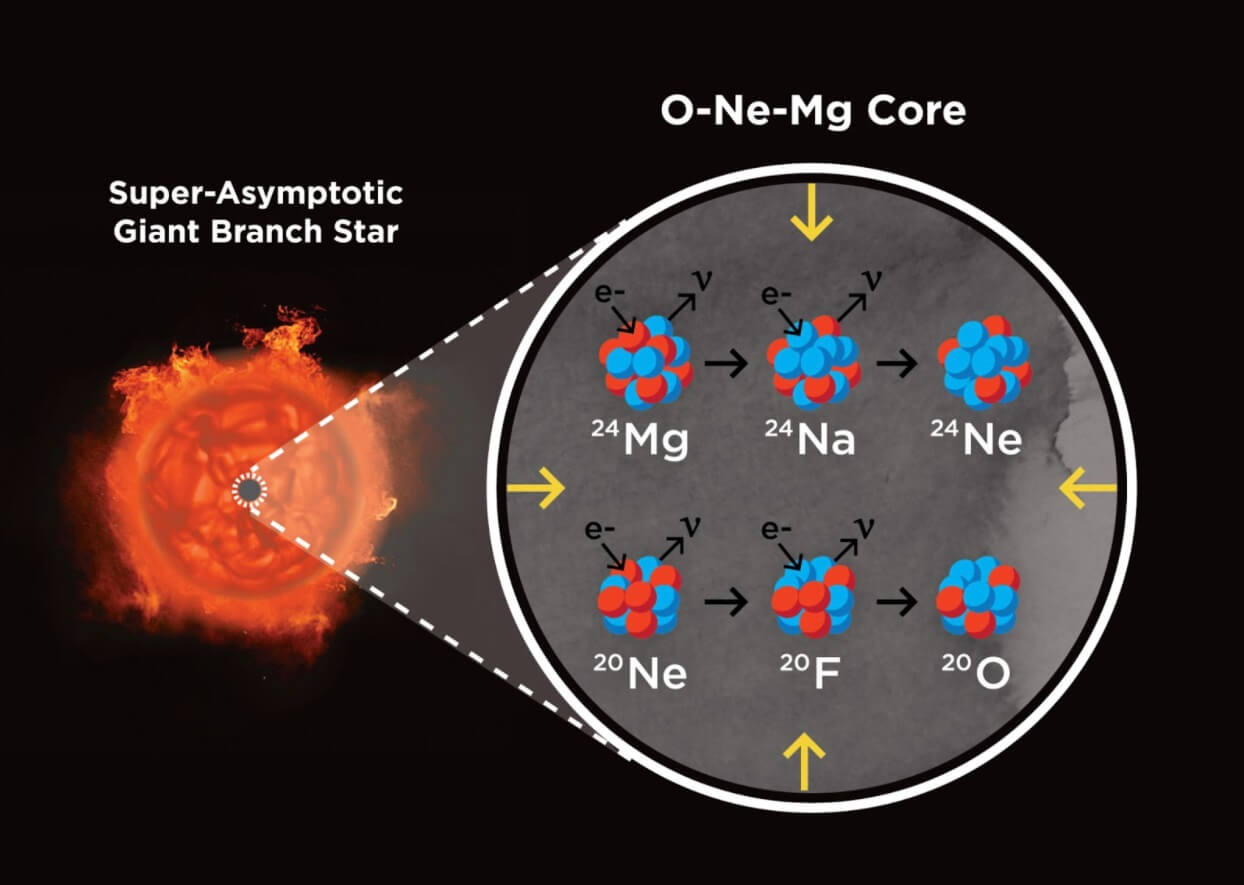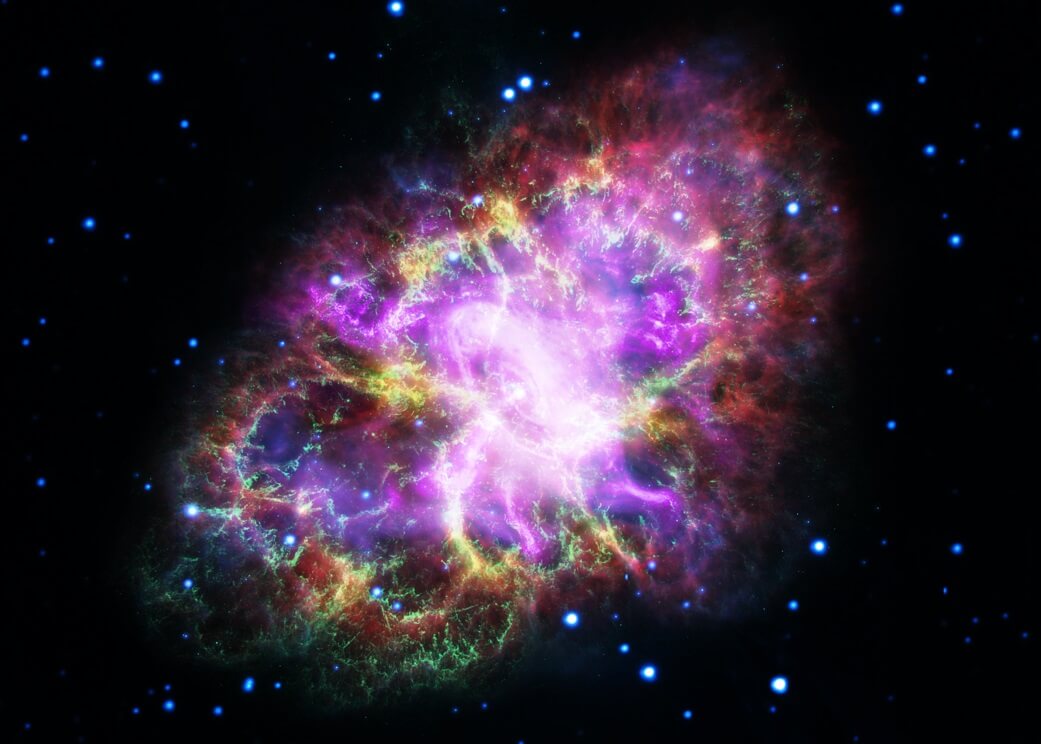30.06.2021
Theory becomes reality as astronomers observe an electron capture supernova, more than 40 years after it was first predicted.

An international team of astronomers has uncovered the first convincing evidence for a new type of stellar explosion: an electron capture supernova.
For two years, the team collected detailed data on the supernova 2018zd, which astronomers spotted in March 2018, just hours after it exploded 31 million light years away in the galaxy NGC 2146. They have now confirmed that this far-off firework is a new, third type of supernova.
“One of the main questions in astronomy is to compare how stars evolve and how they die,” says Stefano Valenti from the University of California, Davis, and a co-author on the new paper published in Nature Astronomy.
“There are many links still missing, so this is very exciting.”
Astronomers have previously only observed two main types of supernova.
A thermonuclear supernova occurs when the corpse of a low-mass star, called a white dwarf, accretes matter from a companion in a binary star system, reaches a critical mass and explodes.
A core-collapse supernova occurs when a star more than 10 times the mass of our Sun exhausts its nuclear fuel. For all its life, the energy produced by fusing elements in a star’s core prevents it from collapsing under gravity, but when the star begins to produce iron, this spells the end of its fusion process. Iron needs to absorb energy to fuse into heavier elements, and so with no energy to support itself, the star collapses under its own weight to form a black hole or neutron star.
In 1980, a third type was predicted by astrophysicist Ken’ichi Nomoto at the University of Tokyo. An electron capture supernova, Nomoto theorised, would be on the border between the other two types of supernovas, occurring in stars that are not large enough to create iron and instead stop fusion when their cores are made of oxygen, neon and magnesium. When such a star runs out of fuel, gravity would squeeze the atoms in the core together, forcing the electrons into their atomic nuclei, causing the star to collapse.

This new study, led by Daichi Hiramatsu from UC Santa Barbara and Las Cumbres Observatory, found that SN 2018zd displayed six key indicators predicted by theory, including high pre-explosion mass loss, an unusual stellar chemical composition, a weak explosion, little radioactivity and a neutron-rich core.
The team also examined archival images from the Hubble Space Telescope from before the explosion to show that the progenitor star was like a massive super-asymptotic giant branch (SAGB) star.
“We started by asking ‘what’s this weirdo?’” says Hiramatsu. “Then we examined every aspect of SN 2018zd and realised that all of them can be explained in the electron-capture scenario.”
The confirmation of this new type of supernova may also illuminate a 1000-year-old mystery.

In AD 1054, a supernova exploded in our own galaxy. Chinese astronomers recorded that it was so bright it could be seen during the day for three weeks and during the night for almost two years – even today, we can see it as the Crab Nebula. Many astronomers have suspected the explosion was an electron capture supernova, an idea supported by this new research.
“I am very pleased that the electron-capture supernova was finally discovered, which my colleagues and I predicted to exist and have a connection to the Crab Nebula 40 years ago,” says Nomoto, who is still at the University of Tokyo and co-authored the new study. “This is a wonderful case of the combination of observations and theory.”
Quelle: COSMOS
